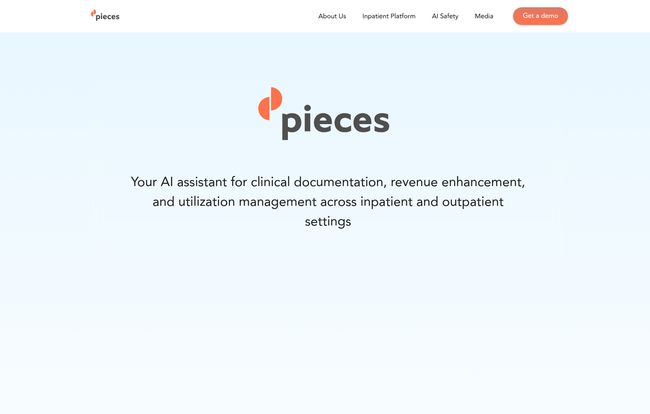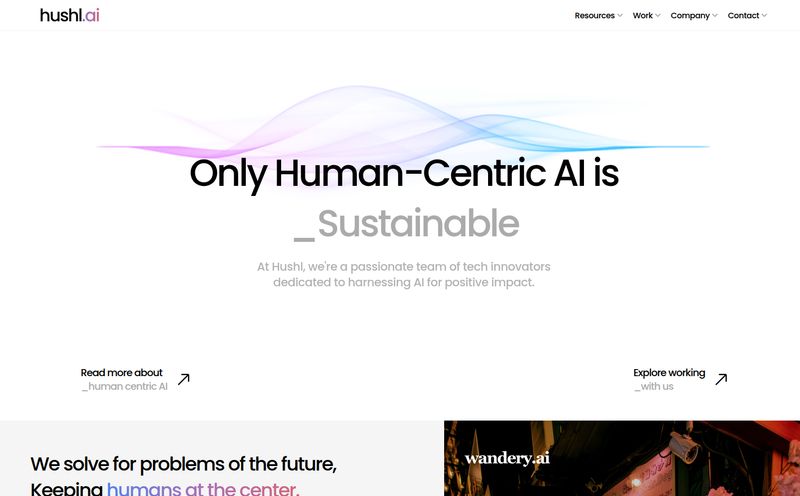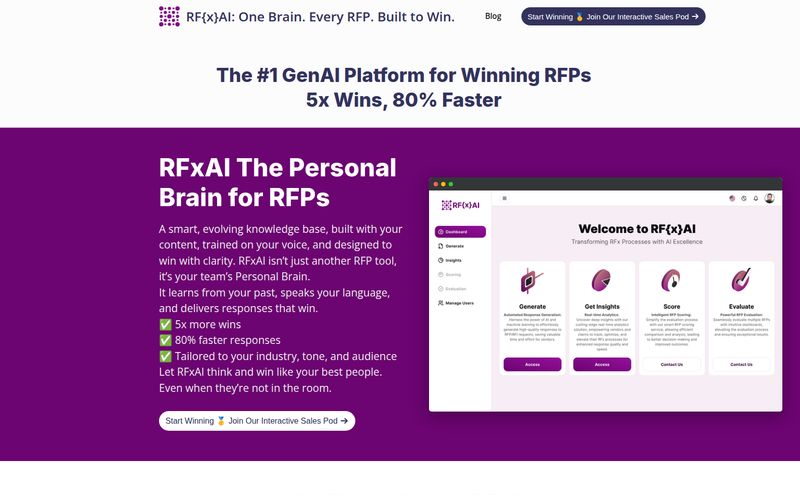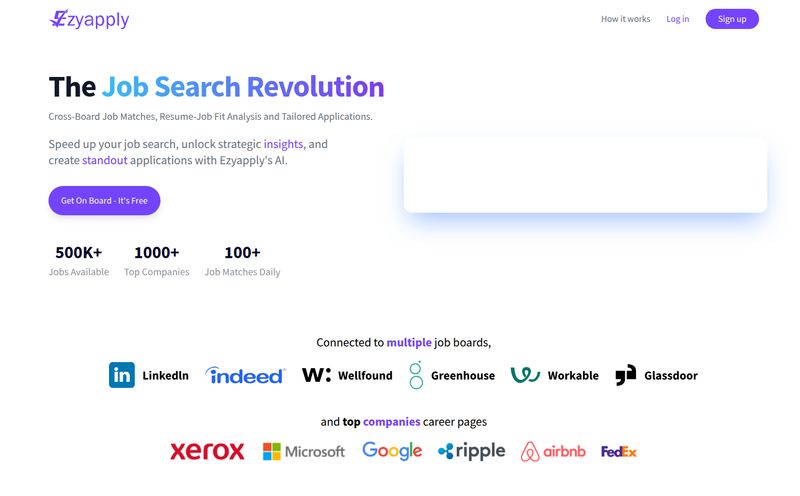If you're in the healthcare world, you know the drill. The endless charts, the late-night EHR sessions fondly nicknamed “pajama time,” the constant nagging feeling that you spend more time with a keyboard than with your patients. It's a grind. Physician burnout isn't just a buzzword; it's a full-blown crisis, and clunky, soul-sucking documentation is a huge part of the problem.
So, whenever a new tool pops up claiming it can fix this, my ears perk up. But my skepticism meter also goes into overdrive. I’ve been in the SEO and digital trends space for years, and I’ve seen a lot of tech that promises to revolutionize everything but ends up just being another password to remember. But every so often, something comes along that genuinely makes me lean in. Recently, that something has been Pieces Technologies.
So, What Exactly is Pieces?
Imagine you had a hyper-intelligent assistant. One who not only helps you write your clinical notes with terrifying efficiency but also has a deep understanding of medical billing. This assistant lives right inside your existing EHR, quietly reviewing documentation, suggesting improvements, and finding billing opportunities that were missed. It’s like having a super-smart medical scribe who moonlights as a revenue cycle expert, all working to make your life easier. That, in a nutshell, is Pieces.
It's an AI-powered platform designed to tackle three of the biggest headaches in modern medicine: clinical documentation, revenue enhancement, and utilization management. And it’s built for both the chaos of an inpatient ward and the steady flow of an outpatient clinic.
The Core Problem Pieces Tries to Solve
Before we get into the nuts and bolts, let's appreciate the problem they're targeting. The administrative burden on physicians is astronomical. A study from the American Medical Association has shown just how dire the burnout situation is, and a lot of it comes down to clerical tasks. Doctors went to medical school to heal people, not to become expert data-entry clerks.
On top of that, hospitals and clinics are under immense financial pressure. They need to ensure they're being reimbursed properly for the care they provide. This often leads to a whole separate layer of administrative drag, with coders and auditors reviewing charts after the fact. It’s inefficient and often feels like trying to fix a ship's leak with chewing gum.

Visit Pieces Technologies
How Pieces Works Its Magic: The Key Features
Alright, so how does this AI actually do anything? From what I've gathered, its power comes from integrating directly into the workflow and hitting those major pain points head-on.
Taming the Documentation Beast
This is the big one for me. Pieces claims that 69-76% of physicians see a reduction in their patient care documentation time. Let that sink in. That's not a small number. That’s potentially hours back in a physician’s week. It does this by using AI to assist in writing things like discharge summaries. Their own data points to a 10% improvement in summaries being completed before discharge. Why does that matter? It means faster bed turnover, smoother patient handoffs, and fewer communication errors. It's a ripple effect that improves the entire system's efficiency.
Finding Money in the Margins
Okay, let’s talk money. The “revenue enhancement” part might sound like corporate jargon, but it’s critical. It’s not about finding ways to overcharge. It’s about accurately capturing the complexity of the patient's condition. For instance, Pieces can identify when documentation supports a more specific diagnosis (a Complication/Comorbidity or CC/Major CC), which leads to more accurate billing. Their case studies show that in one analysis, 37% of encounters had missed billing opportunities. That’s a staggering amount of legitimate revenue being left on teh table simply because the initial documentation wasn’t precise enough. This tool helps close that gap in real-time.
Playing Nice with Your EHR
Any IT director will tell you that the last thing they need is another standalone app that doesn’t talk to their main system. The promise of “seamless EHR integration” is where many tech solutions fall flat. Pieces seems to understand this. By embedding itself within the existing Electronic Health Record, it avoids creating another silo. The goal is to make these AI-powered insights appear as a natural part of the clinician's existing workflow, not a clunky add-on they have to fight with.
A Physician-Led Approach to AI? Color Me Intrigued.
Here’s the part that really got my attention. Pieces makes a point of saying they have a “physician-led approach.” In the world of tech-bro solutions for every problem, this is a breath of fresh air. Having actual doctors involved in the design and training of the AI is, in my opinion, non-negotiable for a tool this critical.
It also explains their focus on AI safety, with a feature they call SafeRead. The AI isn't meant to be a black box that spits out commands. It's an assistant. A co-pilot. The human clinician is always in charge. This approach builds trust, which is absolutely essential when you're talking about patient care. The AI is there to augment human intelligence, not replace it.
The Good, The Bad, and The AI
No tool is perfect, right? Every shiny new platform has its strengths and its potential tripwires. Based on what I've seen, the advantages are pretty compelling. The ability to give clinicians back their time is the headline benefit. It's a direct shot at the heart of the burnout problem. Following close behind is the potential for significant revenue enhancement and better patient safety through clearer, more timely documentation. The seamless integration with the EHR is the glue that holds it all together, making adoption less of a headache.
However, let's be realistic. This isn't a magic wand you just wave at your hospital. Implementing a tool this powerful requires an initial setup and integration project—that takes time and resources. Staff, particularly physicians who are often change-averse, will need some training to get the most out of it. And perhaps most importantly, there’s an absolute reliance on human oversight. You cannot, and should not, just blindly trust AI-generated content in a clinical setting. It's a powerful assistant, but the final call always has to rest with a human expert. It's a partnership, not a replacement.
So, How Much Does Pieces Cost?
Ah, the million-dollar question. Or maybe the multi-million dollar question, depending on the size of your health system. Here’s the short answer: I don’t know. And you won’t find it on their website either. I went looking for a pricing page, and... well, it wasn't there. This is actually pretty standard for enterprise-level B2B software, especially in a heavily regulated field like healthcare.
Pricing is almost certainly customized based on the size of the institution, the number of users, the specific modules needed, and the complexity of the EHR integration. The business model is to get you into a conversation, show you a demo, and build a custom quote. So if you're interested, your next step is to hit that “Get a Demo” button on their site.
Your Questions About Pieces, Answered
What does Pieces Technologies actually do?
Pieces is an AI platform that integrates with a hospital's EHR system. It assists clinicians with documentation to improve efficiency, and it analyzes notes to identify opportunities for more accurate billing and revenue capture.
Does this AI replace doctors or medical scribes?
No, not at all. It's designed as an assistant or a “co-pilot.” The goal is to reduce the administrative workload on clinicians and augment their abilities, not replace their critical thinking or expertise. Human oversight is essential.
Is the Pieces AI platform safe for clinical use?
Pieces emphasizes its physician-led development and a feature called SafeRead to ensure safety and reliability. However, like any clinical tool, it requires proper implementation and responsible use by trained medical professionals who provide the final oversight.
How does Pieces integrate with my hospital's current EHR?
The platform is designed for seamless integration directly into existing EHR systems. This requires a technical setup process managed by the Pieces team and the hospital's IT department to ensure it works smoothly within the current workflow.
Is Pieces only for large hospital systems?
While it's clearly aimed at healthcare organizations, it's designed for both inpatient and outpatient settings. It's likely most cost-effective for medium to large clinics or hospital systems where the efficiencies can be realized at scale.
Where can I find pricing for Pieces?
Pricing information is not publicly available. Interested organizations need to contact Pieces Technologies directly to schedule a demonstration and receive a custom quote based on their specific needs.
Final Thoughts on Pieces
So, is Pieces the silver bullet for what ails modern healthcare? Of course not. No single piece of tech can be. But from my perspective as someone who watches these trends, it’s one of the most intelligently designed and strategically focused platforms I’ve seen in a while. It’s not trying to be everything to everyone. It’s targeting a few of the most painful, costly, and time-consuming problems in the industry.
The physician-led design gives it a level of credibility that many competitors lack. By tackling both clinician burnout and revenue leakage, it makes a compelling case to both the medical staff and the C-suite. It’s not a magic wand, but it might just be the most powerful multitool a hospital can add to its belt in a long, long time.
Reference and Sources
- The Official Website for Pieces Technologies
- AMA Article on Physician Burnout: Physician Burnout an 'Epidemic,' ACP and AMA Warn



